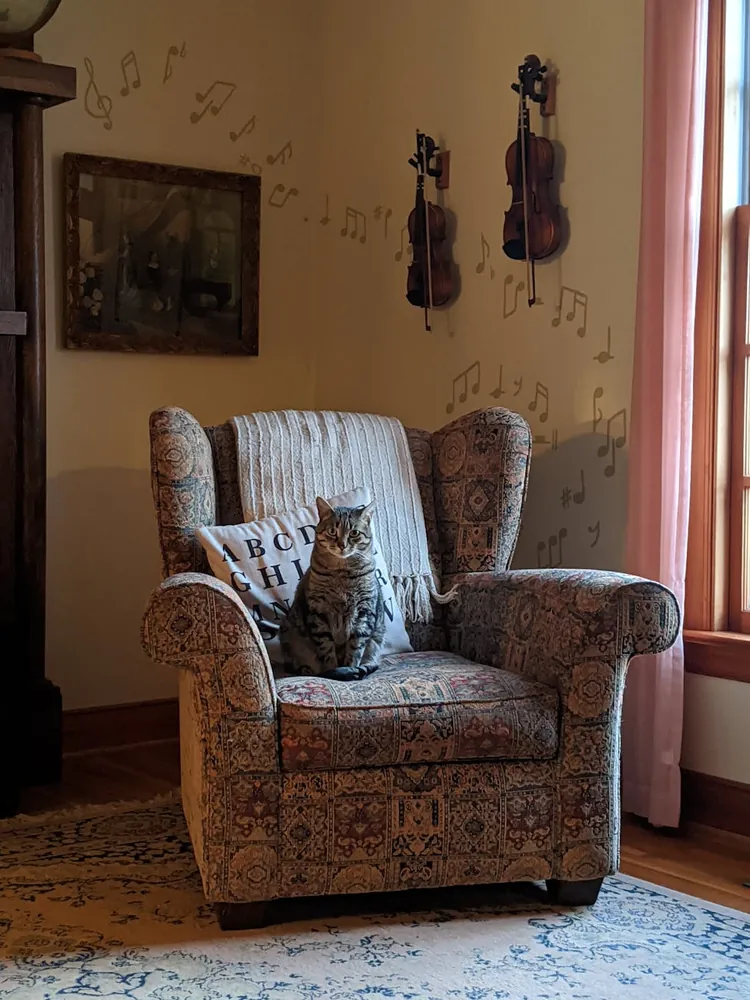Designing Cat-Friendly Spaces: Practical Insights for Enhancing Your Home

Understanding Your Cat’s Natural Instincts
Cats are fascinating creatures with a range of instincts inherited from their wild ancestors. To design spaces that truly cater to their needs, it is crucial to understand these instincts. Cats are natural hunters, love to perch in high places, and require private hiding spots for security. By keeping these behaviors in mind, we can create environments that promote their well-being.
The Importance of Vertical Space
Vertical space is essential for cats as it allows them to observe their environment from a safe vantage point. It also helps them exercise by climbing and jumping. Consider installing cat trees or shelves that give your feline friend the height they crave. These structures can be positioned in various rooms to ensure your cat can always find a high perch.
- Choose sturdy materials that can support your cat's weight.
- Ensure the platforms are wide enough for comfortable lounging.
- Place them near windows for added stimulation.
For example, a simple DIY project could involve installing staggered shelves on a wall, creating a stairway effect that leads to a cozy resting platform near a sunny window.
Enrichment Toys: Keeping Your Cat Engaged
Enrichment toys are vital for providing mental and physical stimulation. Interactive toys, such as puzzle feeders, encourage problem-solving and mimic hunting behaviors. Rotation of toys can prevent boredom and keep things interesting.
Types of Enrichment Toys
- Puzzle Feeders: These toys challenge your cat to work for their food, which engages their mind and satisfies their hunting instincts.
- Interactive Wands: Mimic prey with feathers or strings to encourage play and exercise.
- Automated Laser Pointers: Provide entertainment without human intervention, although supervision is advised to avoid frustration.
Consider setting up a rotation schedule for toys. Swap out toys every week to maintain novelty and engagement.
Safe Hiding Spots: Providing Comfort and Security
Cats need places where they can retreat to feel safe. Providing designated hiding spots throughout your home ensures your cat has somewhere to go when they feel stressed or need alone time.
Creating the Perfect Hideaway
- Use cardboard boxes or covered beds to create secluded areas.
- Avoid placing hiding spots in areas with heavy foot traffic to ensure tranquility.
- Elevate some hiding spots if possible; cats often feel more secure when they are off the ground.
Consider using multi-functional furniture, like side tables with built-in cat cubbies or ottomans with hidden compartments, to maximize space efficiency while catering to your cat's needs.
Incorporating Natural Elements
Cats thrive in environments that incorporate elements from nature. Adding plants and natural textures can enhance your cat's living space and improve their quality of life.
Choosing Cat-Friendly Plants
Select non-toxic plants such as spider plants, Boston ferns, or cat grass. These provide an interesting texture and a touch of greenery without posing a risk if nibbled.
- Avoid plants like lilies and poinsettias, which are toxic to cats.
- Consider using plant shelves or hangers to keep plants accessible but safe from curious paws.
Interactive Play Areas: Designing Fun Zones
To keep your cat entertained and active, consider creating specific areas dedicated to interactive play. These zones can include tunnels, climbing walls, and various toys scattered around the area.
Tips for Designing Play Areas
- Select a quiet corner of a room where you can arrange multiple activity stations.
- Incorporate textures like sisal mats or rugs for scratching and comfort.
- Add a variety of toys that cater to different play styles, ensuring both solitary and interactive play options are available.
A practical setup might involve using vertical space for hanging toys and floor space for tunnels and chase toys. This encourages dynamic movement and keeps your cat physically fit.
Catering to Multiple Cats: Harmony in Shared Spaces
If you have more than one cat, it's important to design spaces that minimize conflict and promote harmony. Each cat should have access to their own resources such as beds, litter boxes, and feeding stations.
Strategies for Peaceful Coexistence
- Create separate feeding stations to prevent resource guarding or bullying during meal times.
- Provide multiple litter boxes in different locations—one more than the number of cats you have is ideal.
- Ensure there are multiple hiding spots and elevated perches so each cat has their own territory.
A common approach is to divide the house into different zones, allowing each cat to have their own space while sharing communal areas like living rooms under supervision.
A Holistic Approach: Monitoring Behavior and Adjusting
Finally, regularly observe your cat's behavior and make adjustments as needed. Cats are creatures of habit but may occasionally develop new preferences or needs as they age or as the household changes.
Checklist for Evaluating Your Cat's Environment
- Check if your cat uses all provided vertical spaces; add more or rearrange if needed.
- Observe play patterns—are certain toys ignored? Rotate them more frequently or introduce new types.
- Monitor interactions between multiple cats and adjust their living zones to reduce tension.
This iterative approach ensures that your home continues to meet the changing needs of your beloved feline companions over time. Remember, the goal is a happy and healthy environment that caters to their natural instincts while enhancing the living experience for everyone in the household.
